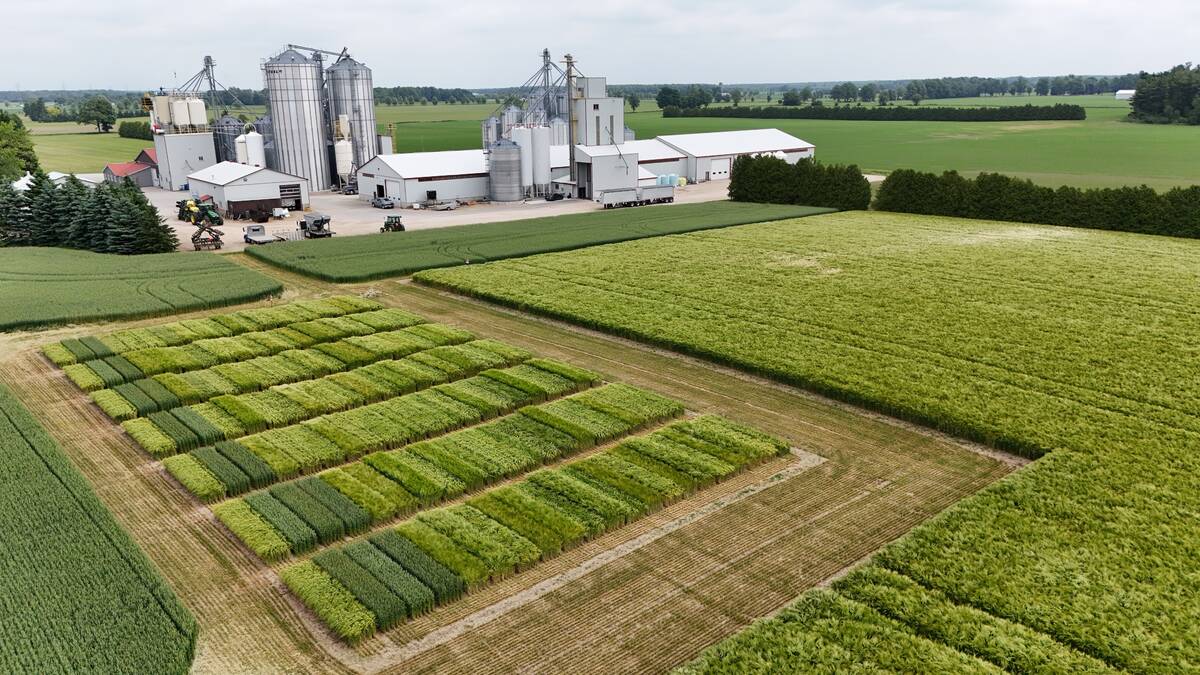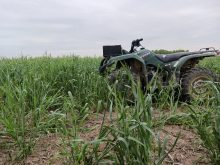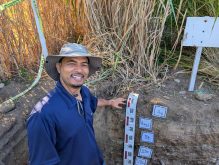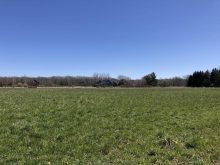Farmers plant cover crops for a variety of reasons from weed suppression to erosion control and better soil structure. The increasing interest has seen researchers and growers partner to put data behind in-field observations.
Roots Not Iron is one such initiative, designed to measure changes in soil health indicators in cover crop and cover crop-free cropping systems. With 2022 the final growing season of the multi-year project, overall results seem to indicate little change in soil health, including soil organic matter levels.
Why it matters: Benefits of cover crops can be hard to pin down with numbers. Still, growers know better soil when they see it.
Read Also

Winter cereals beyond wheat gaining traction
Winter cereals such other than wheat, such as barley, could provide better yield and rotation options for Ontario growers.
Does this suggest cover crops are not worthwhile? Not according to those involved in the project, soil health specialists, or conservation groups working with farmers to improve water quality. Instead, they say the report highlights opportunity to identify other soil-health metrics while reinforcing observations that the benefits of cover crops change from field to field and year to year.
Project background
Launched in 2015, the Roots Not Iron project measured how a range of soil characteristics changed over time in three different production systems:
1. No cover crop with some tillage;
2. Standard cover crop rotation (red clover after wheat, or an oat-pea mix if clover establishment was poor) with fall burn down and some tillage;
3. A multi-species mix (minimum of eight species) terminated in the spring and strip tilled prior to corn planting. Cereal rye followed corn harvest and was terminated in the spring, prior to no-till soybeans.
How crops and covers were managed did change over the course of the project, most notably with the incorporation of strip till for planting corn into green, overwintered covers. This was done to mitigate what had initially been significant yield reductions in the plant-green test sites — a result of what the experimenters believe were a number of factors, including failure to close the seed trench due to living root masses.
As described in the project’s final report, significant variability was found between sites in the different production systems. But after six years of testing each production system, essentially no difference in soil health measurements were found within sites in any of the three categories.
“Overall data shows potentially a minor trend to higher active carbon levels with increasing cover crops but there is no statistical difference between treatments,” says the report.
The conclusion summarizes some of the challenges encountered throughout the project’s duration, as well as yield observations for corn, soybeans and winter wheat. It ends by reiterating there “has potentially been some minor improvements in soil health over the last six years of [the Roots Not Iron] project, but results are still statistically insignificant and very minor.”
You know it when you see it
While soil organic matter levels and other measured soil health metrics did not appear to change in any of the three management categories, the report does hypothesize that different metrics could have indicated change.
“There is still a lot of debate about what constitutes a healthy soil and which tests are the best indicators. Organic matter has always been the gold standard for indicating how healthy a soil is, but the current thinking is that active carbon and potentially mineralizable nitrogen are two other tests that may be a good indicator of if a soil is healthy or not.”
Jake Munroe, field crop soil management specialist, also says the benefits afforded by cover crops can be difficult to put numbers to. But while somewhat intangible, growers know them when they see them.
“Soil health testing is great, and I encourage growers to look at that, but to me the most telling signs of healthy soil are soil structure, how well it plants, drinks water.” he says.
“What I and growers should look at — are you getting tangible benefits? You may not be able to put numbers to it but you will know those benefits. Are you getting good soil structure and holding up the sprayer so you can get in and spray when you need to? Fewer replant issues? Closing the seed slot even on tougher ground? All those examples to me mean you’re getting something.”
Referencing some of the challenges project researchers had in planting green, Munroe adds employing overwintering species for planting green does come with more risks, but growers should not be discouraged from experimenting with different systems generally.
“Doing this sort of thing with overwintering covers is no doubt riskier. I don’t think the conversation should be the same across all soil types. To me, the concept of planting into a living cover crop is much more doable, less risky, and more likely to achieve regular success if you’re in a more medium soil. On clays, the coarse-textured soils, you’re more at risk of too much moisture depletion,” says Munroe.
“Just know you can do everything right, but if you’re on a very challenging soil and soil texture you may still end up with a really difficult situation.”
Experimentation encouraged
Munroe’s sentiments are shared by Cathy Dibble, one of the researchers involved in the Roots Not Iron project, and communications co-ordinator for Thames Valley Regional Soil & Crop Improvement Association. For Dibble, the lack of change in soil health data may have been somewhat surprising and disappointing, but there are clear benefits to cover crops. She encourages growers to read the full Roots Not Iron report — available on the OSCIA website under “OSCIA Tier Projects” — to see how cover crops influenced production in the different commodity crops and under different seasonal conditions.
“I’d never discourage anyone from trying cover crops if they’ve never done it before. I sill think you’ll see improvements in soil structure even if you don’t see any results in the data,” says Dibble, herself an active employer of cover crops on her family’s home farm.
“Don’t be afraid to try something. What you see will be different from neighbours, different from farmers in other parts of the province… You can’t plan everything to the nines.”
Donna Small, soil and water quality technician and interim agricultural program co-ordinator with Lower Thames Valley Conservation Authority, says it will be interesting to compare Roots Not Iron results to results from projects which the Authority is working on locally.
“We currently have the Soil Heath Program and Phosphorus Reduction Program. These programs work to improve soil health and improve water quality,” says Small. “One thing we are looking at is how the implementation of cover crops can work to reduce the total phosphorus loads entering waterways from field tile after rain events. We have an edge-of-field project in place with the University of Waterloo, where we are monitoring phosphorus loads between two fields to validate the efficiency of different cropping systems. One is a no-till continuous cover crop system and one is a conservation tillage system.
“Long-term data for these types of initiative is very important because we know that soil health improvements move slow…I would hope that these results do not paint a negative picture for cover crops and reduced tillage, but instead raises the question of what else can be done to improve soil health.”















